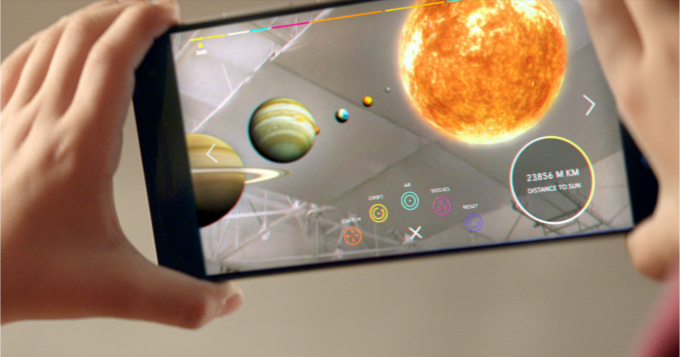
Tango, formerly known as Project Tango, is what appears to be a very exciting project by Google that uses computer vision to enable mobile devices to detect their position relative to the world around them. This allows for apps such as indoor navigation, 3D mapping, augmented reality and windows into a virtual world. With the very first Tango phone becoming available this week there is a lot going on in the Tango space at the moment.
35 Apps Arrive With The Phab 2 Pro
Firstly we saw the first Tango phone, the Lenovo Phab 2 Pro bring with it over 35 new Tango apps. Tango is all about experiences and with a Tango-enabled device you can measure anything in your home with the measurement displayed in augmented reality, visualise how some furniture and appliances will look in your home with a few different apps , play dominoes anywhere without having to pack up the tiles, paint or draw on any surface in your home, play with virtual pets , or race your own race tracks.
Even more can be seen over at the Google blog and if you are interested in what Tango already has to offer I suggest you check it out. It is amazing to see such useful apps already surfacing given the relative newness of Tango. With more Tango-enabled phones coming in the new year or so I can’t wait to see what else app developers bring to us.
Google Speaks Out On Tango Issues
Google held a press event last week and Google Tango’s director of engineering, Johnny Lee was there. According to him they have solved one of the main issues associated with wireless VR headsets, inside-out positional tracking:
We’ve solved it here– (with the Phab 2 Pro) — As you can see [inside-out positional tracking] clearly works on this phone. We’ve even had people strap a tablet sized device with Tango built in into a custom VR headset and the positional tracking worked just as well as it does here. The only thing really holding us back right now are the thermals. Right now, phones just get way too hot if we ask them to run positional tracking and split-screen stereoscopic image at 90 fps. As Daydream matures and Tango continues to improve, the sophistication around tracking will also evolve over the next 2-3 years.
When we will see this converted to a VR headset that we can purchase is unknown but it is still early and they have other obstacles to pass before that happens. Don’t rush out and buy an expensive VR headset now I think is the message here, with Google getting closer to obtaining decent positional tracking, as are other companies currently working on the same projects. A few years down the track might be another story.
Google Tango and Daydream Merged Under The One Umbrella
At the same press event Johnny Lee also said that Tango and Daydream work together and report to Clay Bavor, VP of Virtual Reality. With these two groups under the same VR umbrella, it is possible we will see more crossover from over project to the other. While it is unlikely to happen in this generation given the closed nature of the Daydream viewer (it shuts the phone into it) it is possible we may see the technologies become one in future generations.
While Tango may not be available in Australia officially just yet, it may make it here through various grey market importers such as Expansys but we still have our fingers crossed for an official release here, just as we are getting very soon for the Daydream viewer.
Are you into VR/AR? Are you looking at getting either from Google?




